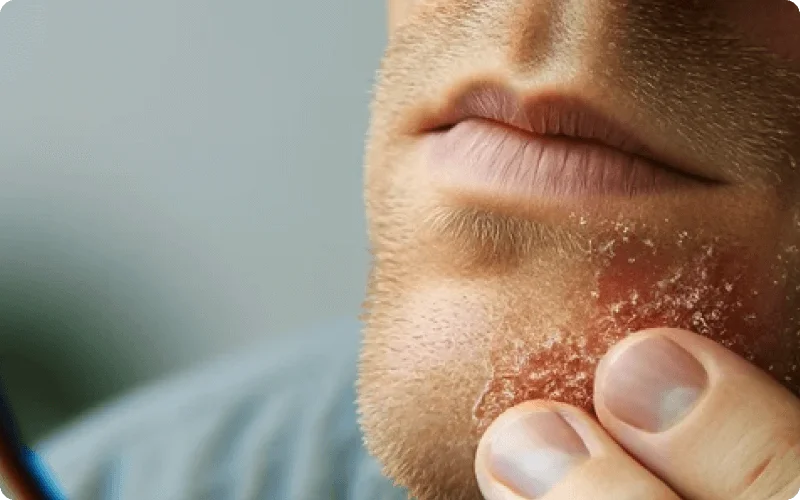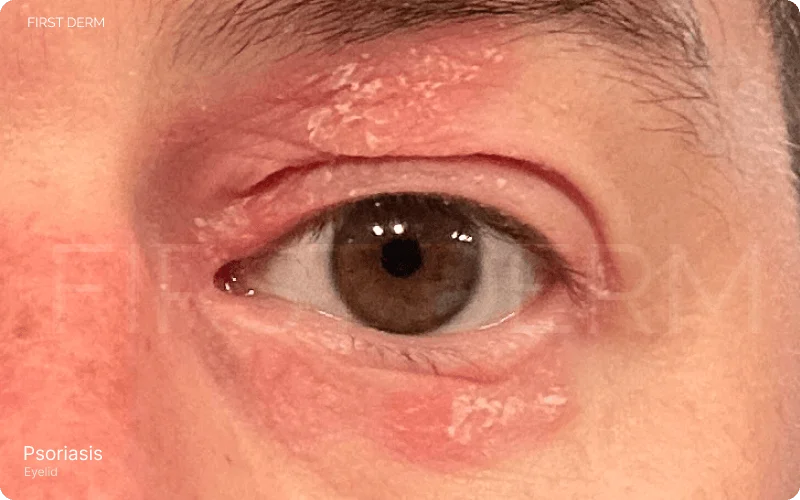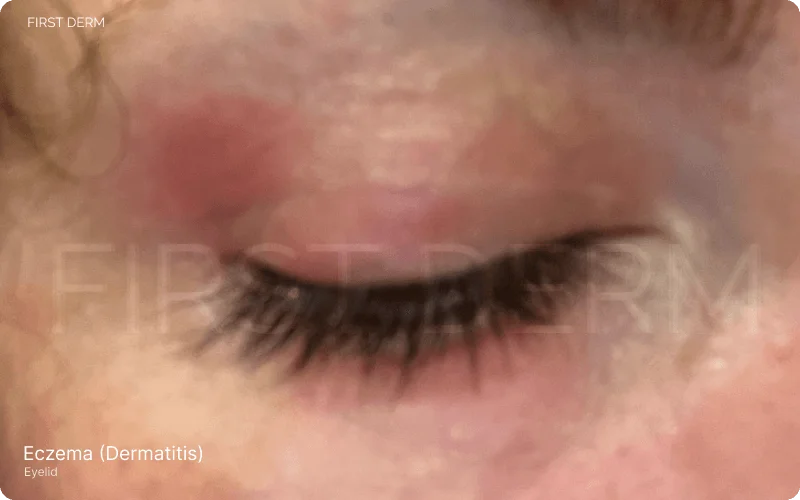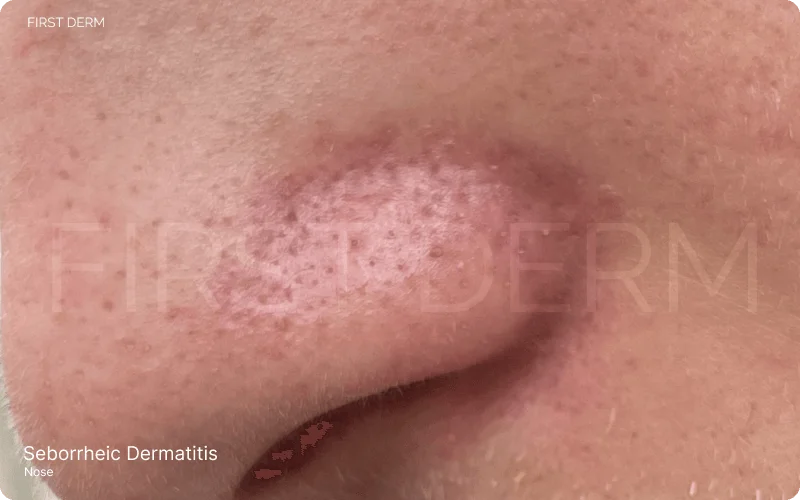Dry Patches on Your Face? Pictures, Causes & Treatments

Key Takeaways
- Discover Common Causes: Uncover the four main causes of dry patches on the face – Psoriasis, Eczema, Contact Dermatitis, and Seborrheic Dermatitis.
- Symptom Recognition: Learn to identify the distinct symptoms associated with each condition for accurate self-assessment.
- Treatment Options: Explore a variety of effective treatments available for each condition.
- Preventive Strategies: Gain insights into daily skincare routines and lifestyle adjustments that can help prevent and manage these skin issues.
- When to Consult a Doctor: Understand the importance of professional medical advice for severe cases or when self-care measures are insufficient.
Have you ever experienced the horrible reality of waking up to discover dry, scaly patches on your face? And the timing is just perfect to ruin one of the most important days of your life. Today is the day you say goodbye to all those miserable mornings! Uncover the diverse causes behind this common skincare concern, discover effective treatments, and gain valuable insights into maintaining a healthy, hydrated and vibrant complexion.
Dry patches on the skin are localized areas that lack proper hydration, often characterized by a rough, flaky texture. These parched regions can appear red or irritated, and the skin may feel tight and uncomfortable. And when they appear on your face, it does not bode well with your appearance. Factors like weather conditions, inadequate or improper skincare, and underlying health issues can contribute to the development of dry patches. But there may be more specific causes, or even dermatological conditions causing these dry patches on your face.
Skin conditions that cause Dry Patches on Face
1. Psoriasis

Psoriasis on Eyelids: Exhibiting Dry, Flaky Patches, Redness, and Shiny, Inflamed Skin
Psoriasis is a long-term inflammatory skin disease that can give rise to dry patches on the face. Although it appears on other body parts such as scalp and outer surfaces of knees and elbows more commonly, studies have shown 17%-46% of patients with psoriasis usually experience facial involvement.[1] The disease is usually severe if it appears on your face. Furthermore, recently it was found out that wearing face masks can trigger facial psoriasis episodes.[2]
Patients have dry scaly plaque like lesions, which differ in colour depending on the skin colour and the ethnicity of the individual. Fair skinned people have pink or red areas with whitish scales, while on darker skin, it appears more brownish and violaceous, along with grey scales.[3] and as psoriasis heals, dark skin may show changes in pigmentation, causing the area to be lighter or darker coloured than the normal skin colour.[3]
2. Eczema

Eyelid Dermatitis: Reddish Patches and Inflammation Characteristic of Eczema
Eczema refers to skin conditions characterized by redness, swelling, scaling, oozing/weeping, and/or dryness. Affecting more than 200 million people worldwide, it is more commonly seen amongst children due to inheritance.[4] These itchy and painful lesions often involve skin folds, including neck, face, wrists and ankles. Typically appears red or pinkish on white skin, and brown in colour on darker skin.
3. Contact dermatitis

Round, Reddish Rash on Chin: Symptoms of Irritant Contact Dermatitis, Characterized by Dryness and Itchiness
Contact dermatitis is a type of eczema that occurs when your skin comes to contact with an object you are allergic to. Great proportion of hand and face dermatitis is due to contact allergens.[5] It can mimic a number of other diseases, including atopic eczema and lichen planus.[5] But, differentiation can be made using the pattern of the lesion, and a good history, where evidence of contact with a suspected item like a face mask or new cosmetic products will be present.
4. Seborrheic dermatitis

Seborrheic Dermatitis Indicators: Prominent Redness and Inflammation at the Corners of the Nose
Seborrheic dermatitis (SD) is a persistent, recurring inflammatory skin condition that appears as red patches or plaques with different degrees of scaling, often accompanied by itching.[6] Typically seen on the scalp, face, groin, axilla, back and chest areas, it is the result of your body’s immune response to the fungal infection called Malassezia.[6]
Environmental and Lifestyle Factors Influencing Dry Patches on the Face
Diagnosing dry patches on the face involves professional assessment by healthcare providers. Dermatologists may employ different methods, including visual examination, medical history analysis, and sometimes skin biopsies. Professional evaluation is necessary to identify underlying conditions like eczema or psoriasis, which require specific management strategies.
For example, skin patch tests are used to identify allergens that cause contact dermatitis, and blood tests are done to determine underlying diseases like diabetes, that might give rise to skin manifestations. This ensures an accurate diagnosis and enables tailored treatment plans for effective management of dry patches, emphasizing the significance of seeking medical expertise for skin health.
Diagnosis of Dry Patches on the Face
Diagnosing dry patches on the face involves professional assessment by healthcare providers. Dermatologists may employ different methods, including visual examination, medical history analysis, and sometimes skin biopsies. Professional evaluation is necessary to identify underlying conditions like eczema or psoriasis, which require specific management strategies.
For example, skin patch tests are used to identify allergens that cause contact dermatitis, and blood tests are done to determine underlying diseases like diabetes, that might give rise to skin manifestations. This ensures an accurate diagnosis and enables tailored treatment plans for effective management of dry patches, emphasizing the significance of seeking medical expertise for skin health.
Treatment Options for Facial Dryness and Flakiness
When addressing specific skin conditions, it’s crucial to follow the treatment plan prescribed by your healthcare provider. This section outlines the standard treatments for various skin conditions that cause facial dryness and flakiness.
Psoriasis Management
Psoriasis requires a comprehensive treatment approach. Options include:
- Topical Corticosteroids: These are commonly prescribed for their anti-inflammatory properties.
- Biologics and JAK Inhibitors: These advanced medications offer targeted relief.
- Phototherapy: Controlled exposure to UVB light helps reduce symptoms.[3]
Eczema Care
Eczema treatment typically involves:
- Topical Anti-Inflammatory Medications: Such as corticosteroids and calcineurin inhibitors.
- Systemic Medications: These may include oral corticosteroids or immunosuppressants for severe cases.[4]
Contact Dermatitis Treatment
Effective management involves:
- Avoiding Triggers: Identifying and steering clear of irritants.
- Topical Corticosteroids and Antihistamines: These provide symptom relief.[5]
Seborrheic Dermatitis Remedies
This condition responds well to
- Antifungal Agents: Used to eliminate the causative fungus, available in both topical and oral forms.
- Medicated Shampoos: Particularly for scalp involvement, ingredients like lithium gluconate/succinate, coal tar, salicylic acid, and benzoyl peroxide are beneficial.[6]
General Skincare Tips
For overall skin health:
- Gentle Cleansing: Use non-soap cleansers with a pH level close to the skin’s natural acidity (pH 4.5-5.7).[7]
- Regular Moisturizing: Opt for barrier repair moisturizers to enhance skin protection.
- Bathing Habits: Use lukewarm water and limit bathing time to prevent skin from drying out.
- Hypoallergenic Products: These minimize the risk of irritation.
A holistic approach to managing and preventing dry patches on the face involves both specific treatments for underlying conditions and general skincare practices. Consulting with a dermatologist is recommended to tailor these strategies to your individual needs, ensuring effective and personalized care.
Preventive measures
You can avoid dry patches on your face altogether by adhering to following simple lifestyle adjustments. Remodel your daily skin care routine by replacing harsh products with gentle cleansers and moisturizers. Protect your face from extreme weather conditions by using appropriate clothing and accessories. The biggest secret to having healthy vibrant skin is to nourish it from within. So, do not forget to drink plenty of water and eat a healthy, nutritious, and balanced diet. Include foods rich in essential fatty acids, vitamins, and antioxidants, promoting overall skin health.
Protective measures against environmental aggressors are also very important for preventing dry patches. Use humidifiers to combat dry indoor air, especially during colder months. Shield your face from harmful sun rays by applying sunscreen daily. Even though many are oblivious to this, stress can contribute to skin issues. Adopt stress-reducing practices such as meditation, deep breathing, or yoga to promote overall well-being and maintain skin health.
When to See a Healthcare Provider
While occasional dryness is common, certain signs indicate the need for a healthcare provider’s expertise. Consult a professional if you observe:
- Persistent dry patches that don’t improve with over-the-counter remedies.
- Excessive redness, inflammation, or swelling.
- Symptoms spreading rapidly or affecting a large area.
- Development of pain, discomfort, or itching that disrupts daily activities.
- Presence of oozing, weeping, or signs of infection.
Don’t delay seeking help if faced with challenging symptoms, as it helps proper diagnosis of underlying disease. Timely intervention by a healthcare provider ensures effective management and promotes long-term skin health.
Further Reading: Understand the 10 Key Causes of Dry, Itchy Scalp and Effective Management Strategies
References
- van de Kerkhof PC, Murphy GM, Austad J, Ljungberg A, Cambazard F, Duvold LB. Psoriasis of the face and flexures. J Dermatolog Treat. 2007;18(6):351-360. doi:10.1080/09546630701341949
- Damiani G, Finelli R, Kridin K, et al. Masks trigger facial seborrheic dermatitis and psoriasis: evidence from a multicenter, case-control study during COVID-19 pandemic. Ital J Dermatol Venerol. 2022;157(5):419-423. doi:10.23736/S2784-8671.22.07246-2
- Alexis AF, Blackcloud P. Psoriasis in skin of color: epidemiology, genetics, clinical presentation, and treatment nuances. J Clin Aesthet Dermatol. 2014;7(11):16-24.
- Chovatiya R. Atopic Dermatitis (Eczema). JAMA. 2023;329(3):268. doi:10.1001/jama.2022.21457
- Li Y, Li L. Contact Dermatitis: Classifications and Management. Clin Rev Allergy Immunol. 2021;61(3):245-281. doi:10.1007/s12016-021-08875-0
- Borda LJ, Perper M, Keri JE. Treatment of seborrheic dermatitis: a comprehensive review. J Dermatolog Treat. 2019;30(2):158-169. doi:10.1080/09546634.2018.1473554
- Lichterfeld A, Hauss A, Surber C, Peters T, Blume-Peytavi U, Kottner J. Evidence-Based Skin Care: A Systematic Literature Review and the Development of a Basic Skin Care Algorithm. J Wound Ostomy Continence Nurs. 2015;42(5):501-524. doi:10.1097/WON.0000000000000162
Ask a Dermatologist
Anonymous, fast and secure!

Dr. Raquel Molina Martinez is a board-certified dermatologist from Barcelona with over a decade of experience. Trained at Gothenburg’s University Hospital, she now practices at Centre Medic in Catalonia.

